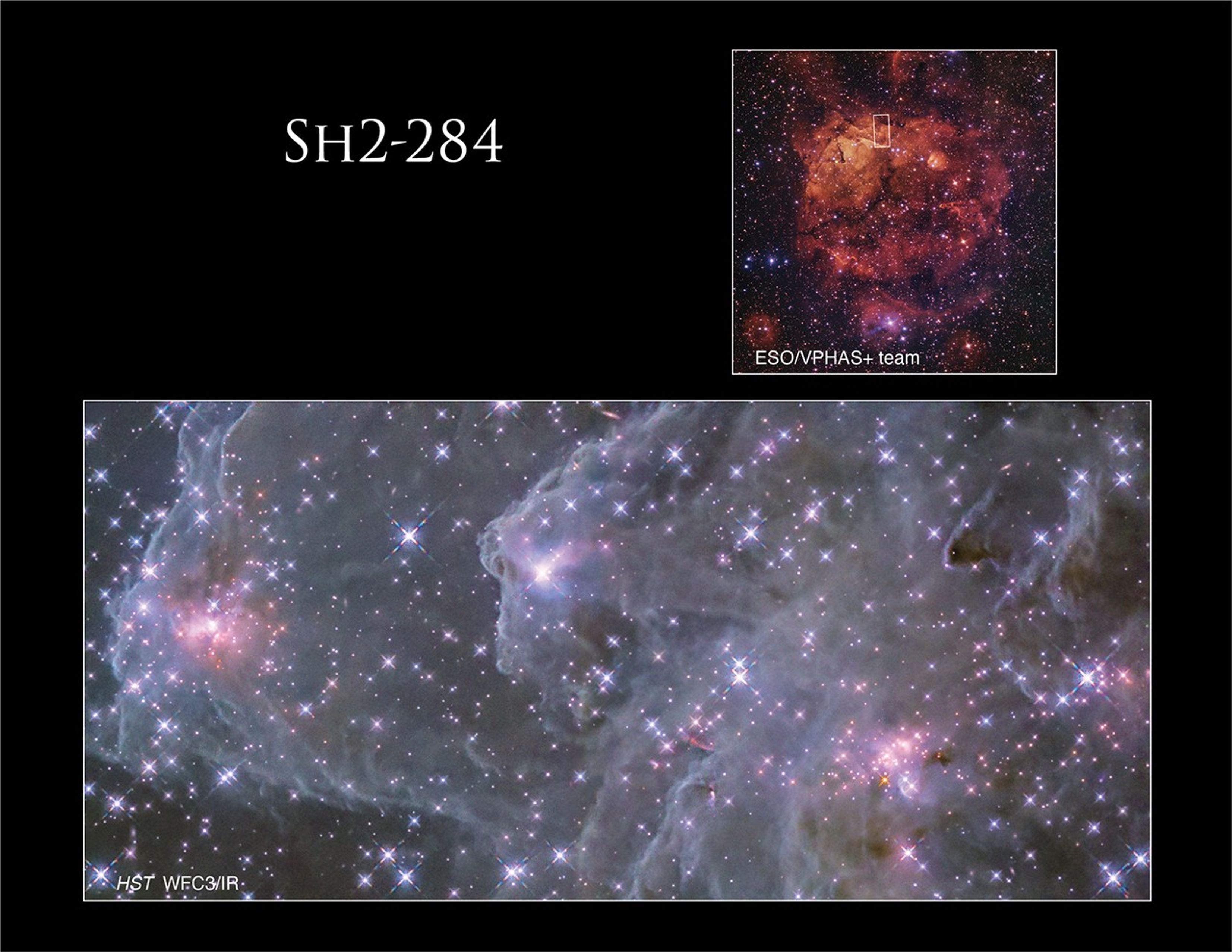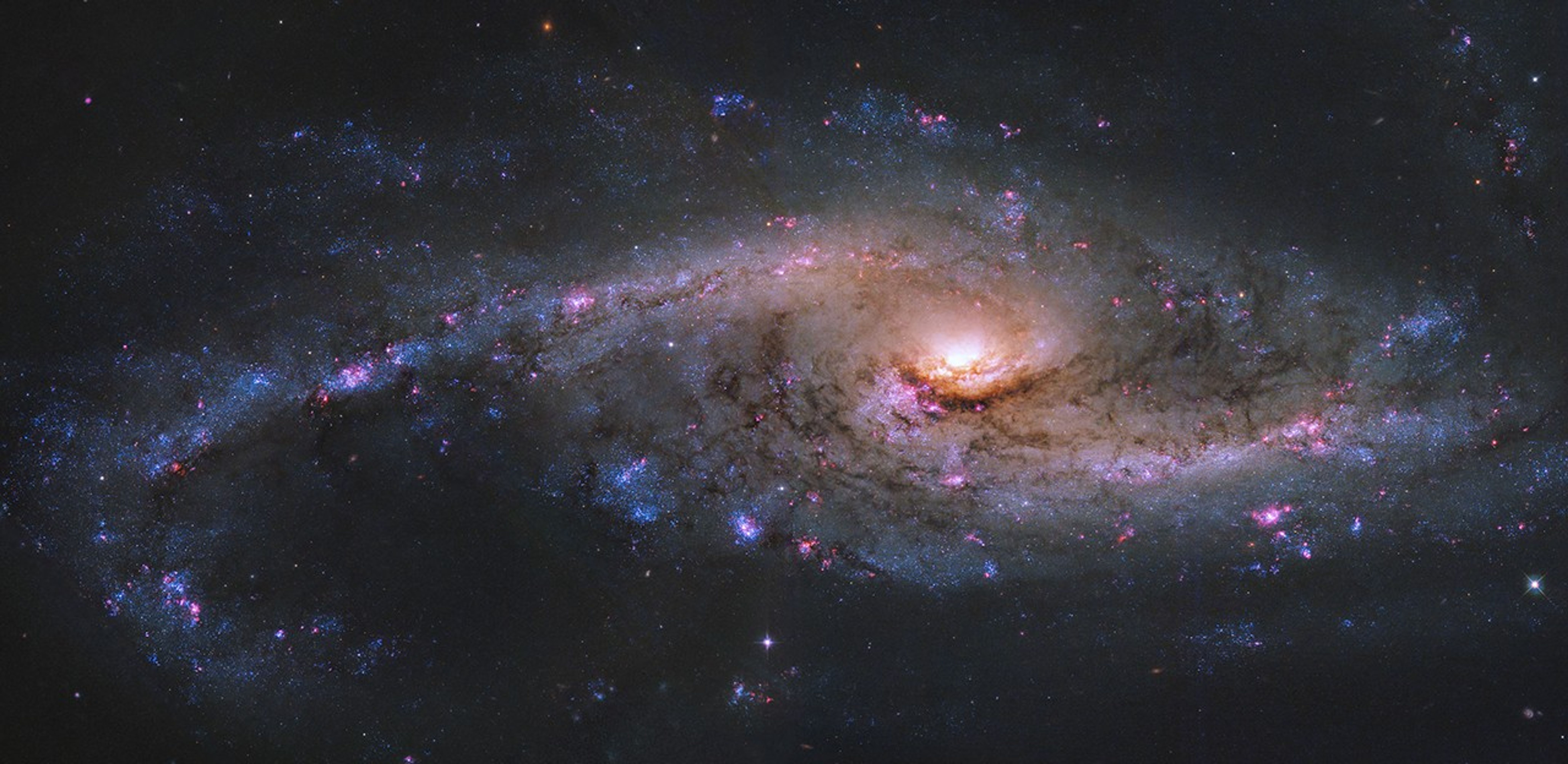11.03.2025
A tiny fraction of the stellar nursery known as Sh2-284 is visible in this glittering, star-filled NASA Hubble Space Telescope image. This immense region of gas and dust is the birthing place of stars, which shine among the clouds. Bright clusters of newborn stars glow pink in infrared light, and clouds of gas and dust, resembling puffy cumulus clouds, are dotted with dark knots of denser dust.
This image shows an infrared view from Hubble, giving an excellent view of the stars that might otherwise be obscured by Sh2-284’s clouds. Unlike visible light, infrared wavelengths can travel through clouds of gas and dust, providing a glimpse of the stars forming within the obscuring clouds.
The nebula is shaped by a young central star cluster, Dolidze 25 (not visible in the Hubble image), whose stars range from 1.5 to 13 million years old (our Sun, in contrast, is 4.6 billion years old). The cluster blasts out ionizing winds and radiation, pushing at the gas and dust of the nebula and carving out intricate shapes and pillars, as seen in detail here. This ionizing radiation gives Sh2-284 its classification as an HII region, an emission nebula consisting primarily of ionized hydrogen. An emission nebula like Sh2-284 glows with its own light as stars within or nearby energize its gas with a flood of intense ultraviolet radiation.

Sh2-284 is also a low-metallicity region, which means it is poor in elements heavier than hydrogen and helium. These conditions mimic the early universe, when matter was mostly helium and hydrogen and heavier elements were just beginning to form via nuclear fusion within massive stars. Hubble took these images as part of an effort to examine how low metallicity influences stellar formation and how this would apply to the early universe.
Sh2-284 resides 15,000 light-years away at the end of an outer spiral arm of our Milky Way galaxy, in the constellation Monoceros.
Quelle: NASA
+++
Hubble Spies a Spectacular Starburst Galaxy

Sweeping spiral arms extend from NGC 4536, littered with bright blue clusters of star formation and red clumps of hydrogen gas shining among dark lanes of dust. The galaxy’s shape may seem a little unusual, and that’s because it’s what’s known as an “intermediate galaxy”: not quite a barred spiral, but not exactly an unbarred spiral, either ― a hybrid of the two.
NGC 4536 is also a starburst galaxy, in which star formation is happening at a tremendous rate that uses up the gas in the galaxy relatively quickly, by galactic standards. Starburst galaxies can happen due to gravitational interactions with other galaxies or ― as seems to be the case for NGC 4536 ― when gas is packed into a small region. The bar-like structure of NGC 4536 may be driving gas inwards toward the nucleus, giving rise to a crescendo of star formation in a ring around the nucleus. Starburst galaxies birth lots of hot blue stars that burn fast and die quickly in explosions that unleash intense ultraviolet light (visible in blue), turning their surroundings into glowing clouds of ionized hydrogen, called HII regions (visible in red).
NGC 4536 is approximately 50 million light-years away in the constellation Virgo. It was discovered in 1784 by astronomer William Herschel. Hubble took this image of NGC 4536 as part of a project to study galactic environments to understand connections between young stars and cold gas, particularly star clusters and molecular clouds, throughout the local universe.
Quelle: NASA
